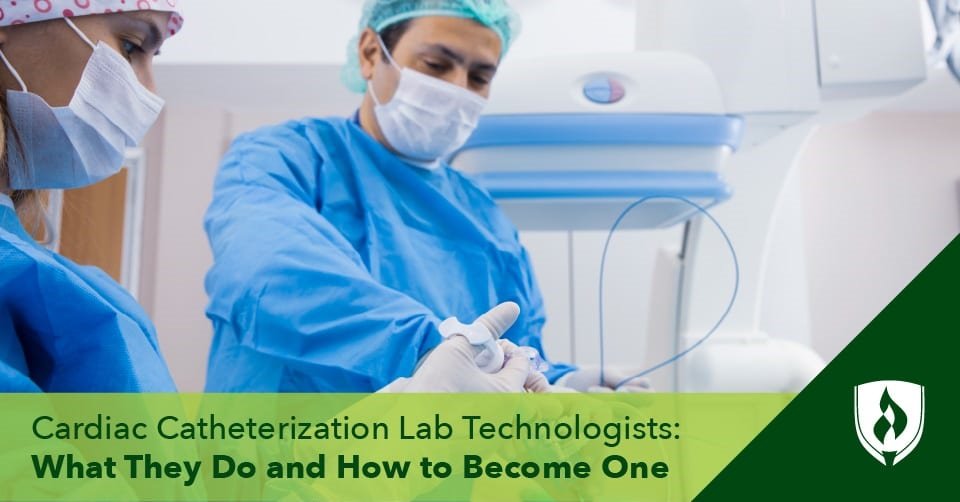
Interested in a rewarding career as a cath lab tech? Dive into the exciting world of cardiovascular healthcare and become part of a critical team that saves lives every day. As a cath lab tech, you’ll play a vital role in diagnosing and treating heart conditions. Join us on a journey to explore the dynamic responsibilities and impact of a cath lab tech firsthand. Discover the blend of technology, precision, and care that defines this essential healthcare profession. Let’s embark on this enlightening exploration together!
The Role of a Cath Lab Tech
Working as a Cath Lab Tech is an exciting and rewarding career path that involves a crucial role in the field of healthcare. In this comprehensive guide, we will delve into the responsibilities, duties, educational requirements, and skills needed to succeed in this specialized area of medical technology.
What is a Cath Lab Tech?
A Cath Lab Tech, short for Catheterization Laboratory Technician, is a healthcare professional responsible for assisting physicians during diagnostic and interventional cardiac procedures. These procedures are performed in a specialized room called the catheterization laboratory or cath lab.
Let’s explore the primary responsibilities and duties of a Cath Lab Tech:
Responsibilities and Duties
- Preparing the catheterization lab for procedures by ensuring all necessary equipment is available and in working order.
- Assisting physicians during cardiac catheterizations, angioplasties, pacemaker insertions, and other procedures.
- Operating various diagnostic imaging equipment such as fluoroscopy machines to visualize the heart and blood vessels.
- Monitoring the patient’s vital signs during procedures and responding to any emergencies or complications.
- Maintaining a sterile field in the cath lab to prevent infections and ensure patient safety.
- Documenting procedure details and patient information accurately for medical records.
- Collaborating with the healthcare team to provide optimal patient care before, during, and after procedures.
Educational Requirements
Becoming a Cath Lab Tech typically requires the following educational background and training:
- Completion of an accredited cardiovascular technology program or radiologic technology program.
- Obtaining certification as a Registered Cardiovascular Invasive Specialist (RCIS) or Registered Radiologic Technologist (RT).
- Continuing education to stay updated on advances in cardiac technology and procedures.
Additionally, some employers may prefer candidates with a bachelor’s degree or previous experience in a healthcare setting.
Skills Needed
Successful Cath Lab Techs possess a unique set of skills that are essential for performing their job effectively. These skills include:
- Attention to detail and strong organizational skills.
- Capability to work well under pressure in a fast-paced environment.
- Excellent communication and interpersonal skills to interact with patients and medical staff.
- Critical thinking and problem-solving abilities to respond quickly to emergencies.
- Technical proficiency in operating complex medical equipment.
Developing these skills through education and hands-on experience is crucial for excelling in the role of a Cath Lab Tech.
Job Outlook and Salary
The demand for skilled Cath Lab Techs is expected to grow in the coming years due to an aging population and advances in cardiac care technology. According to the Bureau of Labor Statistics, the median annual wage for cardiovascular technologists and technicians, including Cath Lab Techs, was $59,100 in May 2020.
Employment opportunities for Cath Lab Techs can be found in hospitals, cardiac catheterization labs, outpatient clinics, and other healthcare facilities.
Working as a Cath Lab Tech is a rewarding career that offers the chance to make a positive impact on patients’ lives. By acquiring the necessary education, certifications, and skills, individuals can embark on a fulfilling journey in the field of cardiovascular technology. The role of a Cath Lab Tech is vital in ensuring the success of cardiac procedures and contributing to the overall well-being of patients undergoing treatment.
Role of a Cath Lab Technologist
Frequently Asked Questions
### What are the basic duties of a cath lab tech?
A cath lab tech is responsible for preparing and maintaining the catheterization lab equipment, assisting physicians during procedures, monitoring patients’ vital signs, and ensuring a sterile environment in the lab.
### How does a cath lab tech assist during cardiac catheterization procedures?
During cardiac catheterization procedures, a cath lab tech assists by setting up the equipment, preparing the patient for the procedure, monitoring the patient’s condition, and providing instruments to the physician as needed.
### What skills are essential for a successful career as a cath lab tech?
Key skills for a cath lab tech include attention to detail, strong communication abilities, proficiency in operating technical equipment, ability to work well under pressure, and a thorough understanding of cardiac anatomy and physiology.
### How important is teamwork in the cath lab setting for a tech?
Teamwork is crucial in the cath lab setting for a tech as they collaborate with physicians, nurses, and other healthcare professionals to ensure successful patient outcomes and efficient workflow during cardiac procedures.
### What are some common challenges faced by cath lab techs in their daily work?
Common challenges for cath lab techs include handling emergency situations, managing multiple tasks simultaneously, staying updated on evolving technologies, maintaining patient comfort, and adhering to strict safety protocols in the lab.
Final Thoughts
In conclusion, pursuing a career as a cath lab tech offers an exciting opportunity to work in a dynamic healthcare environment. With a focus on assisting in life-saving procedures, cath lab techs play a crucial role in delivering quality patient care. The field of cath lab technology is rapidly evolving, providing avenues for professional growth and development. As a cath lab tech, one can experience the fulfillment of directly contributing to improving patient outcomes and saving lives.



